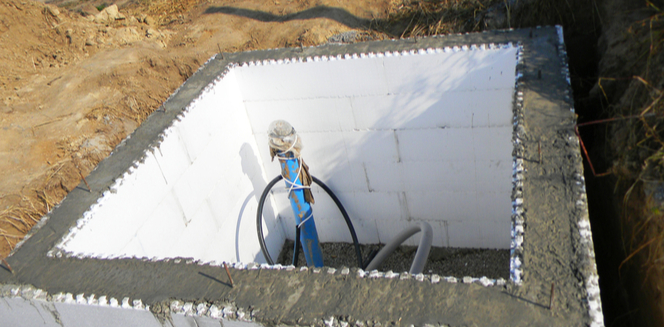Everything You Need to Know About Insulated Concrete Form (ICF) Industry

9 Feb
2022
Insulated concrete form (ICF) is popular for its usage in the construction industry. ICF blocks are made up of expanded polystyrene (EPS) and are typically between six to twelve inches thick. It is used as an integrated concrete form to complete a concrete wall. It comes in interlocking modular sections that can be stacked tightly to pour the concrete and fulfil the form of floors or structural walls of a building. Insulated concrete form helps in fastening several steps of the construction process.
Owing to numerous advantages such as high energy efficiency, strong walls, durability, good insulation, cost savings, disaster resistance, and sound blocking ability, building owners prefer ICF. At the same time, certain benefits such as easy & fast construction, less labor cost, easy installation, and easy shipping makes it a preferred choice for contractors and builders too.
ICF consists of double walled expanded polystyrene panels that are stacked together to produce the permanent insulated formwork which then offer thermal insulating power to the building walls. ICF blocks can be manufactured in multiple shapes & component types based on requirement for roofing, flooring, partition, stair etc.
With rise in lumber prices, many companies shifted from traditional structural solutions to ICFs. For instance, an Ohio builder collaborated with Pro Builder Media and the Energy and Environmental Building Alliance (EEBA) in order to focus on the 55-plus market and develop the healthier & sustainable homes. The system holds a small share of the new residential construction market.
According to a report published by Allied Market Research, the insulated concrete form market size is anticipated to reach $1.6 billion with a considerable CAGR from 2021 to 2027. North America is currently holding the highest market share, owing to a strong economy and commercial real estate. He Asia-Pacific region, on the other hand, is estimated to have the fastest growth rate, due to rise in industrialization and urbanization in developing economies like India, China, and others.
However, the outbreak of the COVID-19 pandemic led to impact the global insulated concrete form market negatively. The pandemic gave way to the implementation of global lockdown, due to why all the construction projects were temporarily closed down. All the ICF manufacturing hubs were halted, especially in the initial period of the pandemic. Due to unavailability of labor force, rise in price of raw materials, and disruptions in the supply chain, ICF manufacturers had to face several challenges. These factors hampered the growth of the global insulated concrete form market to some extent. Now, as the constructs activities are back on track, the ICF market is recovering at a steady pace.

Koyel Ghosh
Author’s Bio- Koyel Ghosh is a blogger with a strong passion and enjoys writing in miscellaneous domains, as she believes it lets her explore a wide variety of niches. She has an innate interest in creativity and enjoys experimenting with different writing styles. A writer who never stops imagining, she has been serving the corporate industry for the last five years.
Avenue: Entire Library membership of Allied Market Research Reports at your disposal
- Avenue is an innovative subscription-based online report database.
- Avail an online access to the entire library of syndicated reports on more than 2,000 niche industries and company profiles on more than 12,000 firms across 11 domains.
- A cost-effective model tailored for entrepreneurs, investors, and students & researchers at universities.
- Request customizations, suggest new reports, and avail analyst support as per your requirements.
- Get an access to the library of reports at any time from any device and anywhere.
Related Post
-
How are Submarine Cables Transforming Global Connectivity with Enhanced User Experience?
-
Endoscopy Procedures: Transformations in Techniques and Applications
-
AI-Powered Video Analytics: How the Product Actually Works for enterprises
-
Painting Robots: Transforming Precision Coating and Creative Applications
-
Innovations in Pharmacovigilance Systems Advancing Patient Safety
-
Understanding Edge Security: Keeping Data Safe Near the Source
-
Exploring the Use and Advancements of 3D Laser Scanners in Professional Applications
-
Reinforcing Industrial Controls with Smarter Tools and Training








